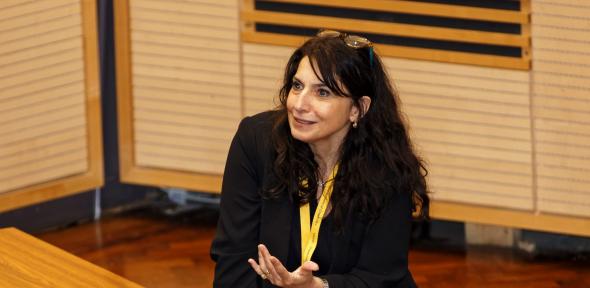
Professor Hanadi Sleiman leads the 2023 Cambridge Energy Transition Lecture, Nathan Pitt, University of Cambridge.
Professor Hanadi Sleiman spoke on her work on DNA nanostructures and how they can be applied to drug design and delivery at the 2023 Cambridge Energy Transition Lecture here in January.
DNA for drug delivery
Sleiman is a professor of chemistry and the Canada Research Chair in DNA Nanoscience at McGill University. Her research group examines DNA as a building block to make biomaterials. Sleiman spoke about her career researching these structures that are so small they cannot be seen by the human eye.
“When I was a postdoc, I knew that I had to work on DNA; it is so predictable and programmable,” said Sleiman.
The gene box
Sleiman’s group developed a nanosized wireframe cube made of sections of DNA that looks a bit like a pergola. This structure is known as the gene box. It can then be decorated with specialised strands of DNA that wrap around the wireframe like garlands. These DNA garlands are chosen to have specific functions such as treating disease.
The gene box is a versatile design and can be built to deliver drugs to specific areas of the body without being broken down by the immune system.
The nano suitcase
Her group has designed many different types of gene boxes. One example is a box that only opens when it encounters a particular molecule found in prostate cancer cells, not in healthy cells.
It is colloquially called the suitcase as it travels through the body and opens like a suitcase once it's arrived at its destination. There, it releases a cancer-fighting drug selectively. This could be used for designing treatments that target only diseased areas in the body and ignore healthy tissue.
“We are uncovering a wonderland of morphologies from these structures,” commented Sleiman.
Athena Swan
Sleiman’s talk about her research was followed by an Athena Swan session where she discussed her career and the challenges along the way with students. There was a lively discussion session where students asked questions about the non-scientific aspects, challenges, and solutions in academia.
